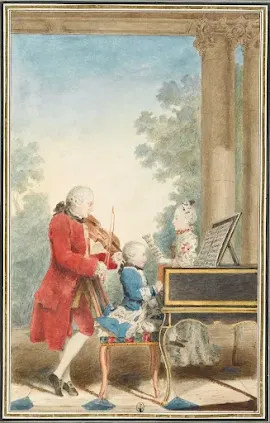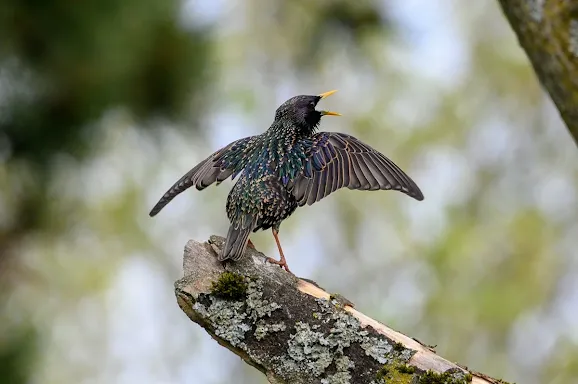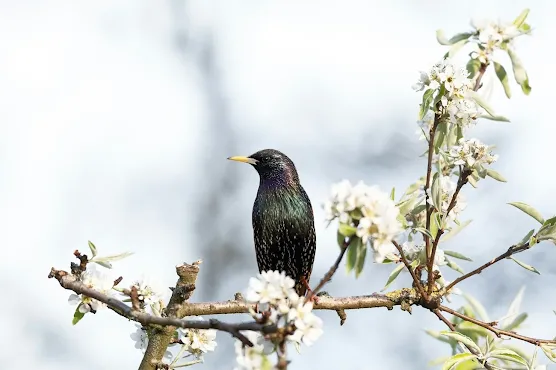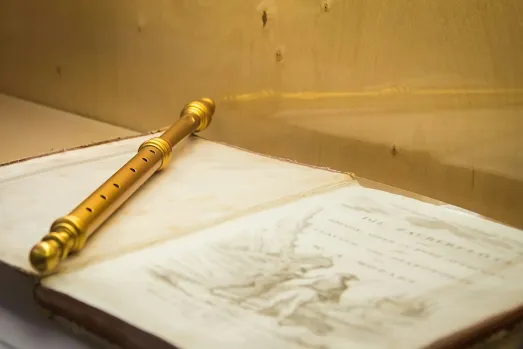Mozart's Domestic Pets: His Life Companions
The Domestic Pets of a Musical Genius
Wolfgang Amadeus Mozart not only enjoyed composing melodies, but also took pleasure in listening to melodies created by nature. Throughout the brief span of his life between 1756 and 1791, the Austrian composer had a variety of pets at home, all adding their distinctive characteristics to his daily routine. Let's investigate the pet friends that were part of Mozart's life. |
| Mozart was a lifelong nature lover and enjoyed spending time with his domestic pets |
Childhood and Move to Vienna
Wolfgang Amadeus Mozart experienced several changes in his life, moving from his modest upbringing in Salzburg to his successful professional life in Vienna, all the while captivating audiences with his exceptional musical abilities. Throughout all these various changes, Mozart's affection for animals, particularly birds, remained a constant presence in his life. |
| Mozart grew up in a musical household where not only his father, but also his sister played an instrument |
Stari: Mozart Favorite Bird
In 1781, Mozart made a crucial choice to depart Salzburg and set up his residence in Vienna, the hub of European music. Mozart's artistic abilities flourished further in Vienna, leading to the creation of his most famous works, including operas, symphonies, and concertos. Despite the busy schedule of his musical career, Mozart could always seek comfort in the peaceful atmosphere of his Vienna residence, where his family included not only his wife but also domestic animals. |
| Did Mozart get inspiration from starlings for some of his flute melodies?
|
Fascinated by the bird's musical abilities, Mozart brought Stari home, where the bird spent long hours singing and listening intently to Mozart's compositions. Soon Stari's repertoire included small snippets of renditions of Mozart's own compositions, particularly the themes from his Piano Concerto No. 17 and a segment of his G minor Symphony.
The starling's musical skill left a lasting impression on Mozart, inspiring melodies that resemble birdsong in his flute compositions.
When the little guy passed away after three years of being part of the household, Mozart didn't take it lightly. Instead, he organized a proper funeral procession.
Imagine this: dressed in mourning attire, singing solemnly as he bid farewell to their feathered friend. Georg Nikolaus von Nissen, in his biography of Mozart, described this heartfelt ceremony in detail, showing just how much Mozart cared. And according Mozart's wife, Constanze, Mozart Mozart even penned an epitaph for the bird's gravestone in the garden, where it was laid to rest. It's a touching aspect of his life that adds depth to his character beyond his musical genius.
Starlings are highly social birds, often found in flocks that engage in intricate aerial displays known as murmurations. With their adaptable nature, starlings are adept at thriving in various environments, from urban settings to rural landscapes. Their ability to adjust to changing circumstances and exploit new opportunities reflects their resilience and resourcefulness. Starlings exhibit signs of curiosity and intelligence, as evidenced by their exploration of their surroundings and problem-solving abilities.
Mozart was probably drawn to the starling's remarkable ability to mimic musical phrases with precision. The bird's uncanny knack for reproducing melodies intrigued the composer. Through his interactions with starlings, Mozart found a source of musical creativity that transcended the limits of human creativity.
Beyond their musical talents, starlings probably provided Mozart with companionship during moments of solitude. As a prolific composer and performer, Mozart often spent long hours immersed in his work, and the presence of a feathered friend offered a welcome respite from the rigors of his artistic pursuits.
Everyone in the Mozart house took care of Pimperl - the dog - and of course, the dog's well-being was a recurring topic in their letters. In September 1777, Mozart's mother sent a letter to the maid from Munich reminding her to regularly go for a walk with Pimperl.
Here lies a bird named Starling,
In life, a cheerful darling.
Though his time was brief,
He brought joy, beyond belief.
Now, my feathered friend's at rest,
Leaving an ache within my chest.
Yet, his memory will forever stay,
Brightening each and every day
Starling Birds
Starlings are renowned for their exceptional ability to mimic sounds, including human speech and musical phrases. Their vocal repertoire allows them to imitate a wide range of sounds with remarkable accuracy, making them natural-born performers in their own right. |
| The singing of starlings during the spring is an exceptional experience |
Starlings are highly social birds, often found in flocks that engage in intricate aerial displays known as murmurations. With their adaptable nature, starlings are adept at thriving in various environments, from urban settings to rural landscapes. Their ability to adjust to changing circumstances and exploit new opportunities reflects their resilience and resourcefulness. Starlings exhibit signs of curiosity and intelligence, as evidenced by their exploration of their surroundings and problem-solving abilities.
Mozart was probably drawn to the starling's remarkable ability to mimic musical phrases with precision. The bird's uncanny knack for reproducing melodies intrigued the composer. Through his interactions with starlings, Mozart found a source of musical creativity that transcended the limits of human creativity.
Beyond their musical talents, starlings probably provided Mozart with companionship during moments of solitude. As a prolific composer and performer, Mozart often spent long hours immersed in his work, and the presence of a feathered friend offered a welcome respite from the rigors of his artistic pursuits.
Pimperl: His Loyal Fox Terrier
Pimperl, a fox terrier, was another cherished member of Mozart's household. Although little is known about Pimperl, other from a few comments in Mozart's letters, it is clear that Pimperl, a fox terrier, had a significant impact on the Mozart family's lives. The dog appears to have been the family's fifth member, as it is mentioned dozens of times in various circumstances. |
| The amount of care devoted to their dog, Pimperl, suggests that he was something akin to the fifth member of the family |
Everyone in the Mozart house took care of Pimperl - the dog - and of course, the dog's well-being was a recurring topic in their letters. In September 1777, Mozart's mother sent a letter to the maid from Munich reminding her to regularly go for a walk with Pimperl.
And in December 1780, when Wolfgang was preparing the premiere of Idomeneo in Munich, he not only sent the usual greetings to the family but also "1000 kisses to the Pimperl".
In Mozart's time, dog owners always had to keep an eye on their four-legged companions, as there was a law in Salzburg according to which dogs running loose had to be caught and killed immediately by so-called "dog beaters". On the other hand, dogs were even given medical care if necessary and Nannerl once wrote in her diary that “a dog doctor from Vienna” had arrived. As can be seen from a letter from Leopold Mozart to his daughter, Pimperl probably passed away in the summer of 1784, because in August of that year, he asks: "Didn't the Pimp's dog soul appear to you?"
Fox Terriers
Fox Terriers come in two varieties: Smooth and Wire-haired. Both varieties are small to medium-sized dogs with a sturdy build. They have a distinctive wedge-shaped head, keen expression, and erect ears. Smooth Fox Terriers have a short, dense, and smooth coat, while Wire-haired Fox Terriers have a rough, wiry coat. Both varieties require regular grooming to keep their coats in good condition. Fox Terriers are known for their intelligence, energy, and feisty nature. They are curious, bold, and highly active dogs that enjoy exploring their surroundings and engaging in activities. While Fox Terriers are intelligent dogs, they can also be independent and stubborn at times. Early socialization and consistent, positive training are important to channel their intelligence and energy into appropriate behaviors. Fox Terriers have high energy levels and require plenty of exercise and mental stimulation to prevent boredom and destructive behaviors. They enjoy activities such as walking, running, playing fetch, and participating in dog sports like agility.Mozart's work is influenced by the natural world
In Vienna, Mozart also had a dog whose name was Gaucker and he has also close relationship to him. In any case, Mozart dedicated a twenty-verse joke poem entitled “The Artful Dog” to this dog.
In addition to his starling, Mozart also kept a canary named Duschel. Duschel's melodious chirping filled the Mozart home after his acquisition in 1787. While Duschel may not have had the remarkable musical abilities of Bimperl, his presence undoubtedly contributed to the lively atmosphere of the composer's household. Mozart's biographer Hermann Abert recounts a poignant tale from 1791, shedding light on the canary friend present in Mozart's household during the composer's final days.
Reluctantly, Mozart consented to the removal of his beloved canary, initially relocating it to the adjacent room and then even farther away. The sound of its joyful singing had become unbearable to Mozart as he lay on his deathbed.
The presence of domestic pets in the composer's home demonstrates Mozart's strong respect for the simple pleasures of life. Mozart's pets had a profound impact on the composer's life and work, in addition to serving as companions. Furthermore, Mozart's relationships with his pets provide insight into his personality and temperament. His loving and often harshly humorous references to Bimperl and Stari in letters reveal a softer, more lighthearted side of the composer that is frequently overshadowed by his musical talent. As we discuss Mozart's incredible contributions to music, let us not lose sight of Nature, which is reflected in his work. Namely in his strong appreciation for harmony, which may be quantitatively represented in a way similar to the harmony of the natural world. In addition, Mozart's music is influenced by nature, particularly in the obvious qualities of spontaneity, wonder, and astonishment. In short, Mozart's music flows like a calm river on a beautiful summer day.






Comments
Post a Comment